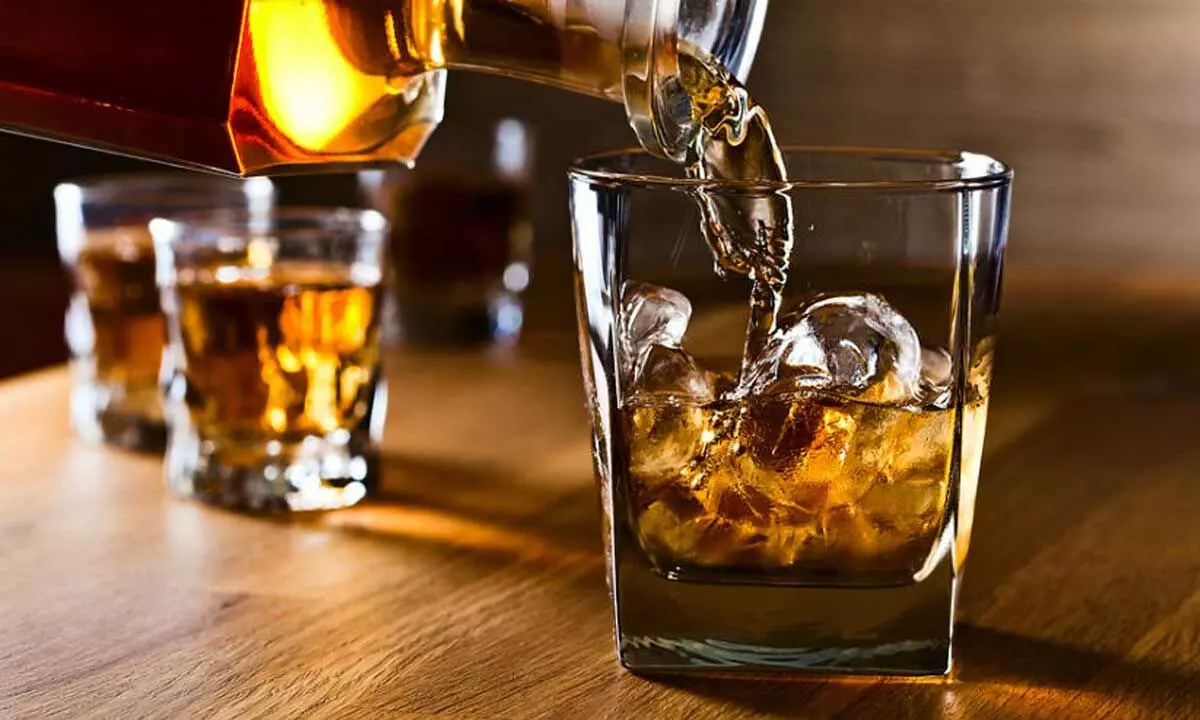Festive season holds big promise for hospitality and liquor industry
Generally, there is a lot of celebration during the festive season and now liquor plays an important role, so liquor companies aim to increase production & distribution this festive season
image for illustrative purpose

Given the advent of an ambitiously rising middle class and increased spending income of this demographic category, the Indian tourism and hotel industry has rightly been lauded as one of the primary drivers of the economy. According to KPMG, it now contributes 7.5 percent of the country's GDP, with a projected growth rate of 16.1 percent CAGR, bringing in about Rs 2796.9 thousand crores by 2022.
At present, the hospitality industry in India is considered a 'sunrise industry' which means it has a huge scope in the near future. It is considered as one of the most profitable industries which also accounts for over 8.78 per cent of the total workforce, creating almost 15 million jobs in the past five years. The sector attracts a major chunk of foreign direct investment inflow along with the most important means of foreign exchange for the country.
By 2023, the overall hotel industry in India is expected to reach over Rs 1,200 billion. In the past few years, the occupancy rate of the major hotels has increased by at least two folds. The hotel industry is growing at about 7 per cent per annum and many experts believe that it may fall short of meeting the long-term demands of the thriving market.
India is home to one of the largest millennial populations in the world. Consequently, it has resulted in the opening up of a number of bars and cafes, nightclubs, and tea and coffee shops. Apart from the tourist destinations and markets, areas around corporate hubs, universities, colleges, and institutions offer immense opportunities for the food and drinks sector.
The hospitality sector has been one of the worst affected by the pandemic. In FY21, the Indian hospitality industry recorded its lowest revenue per available room (RevPAR) of Rs 1,582 in the last 22 years, according to a report by Hotelivate. This is a 60.8 per cent decline over the last year.
But, now, according to a report by HVS Anarock, the occupancies have been at least 50-52 per cent higher on a month-on-month basis and a 25 per cent higher on a year-on-year basis.
A weaker rupee is a double-edged sword for the hospitality and tourism industry. While on the one hand, a depreciating rupee makes India a cheaper destination for foreign tourists to vacation in India, thereby making it more attractive for travellers from developed economies, the import of capital goods and consumer goods will increase in price adding to the costs of the F&B and hospitality industry.
"Import of alcohol and liquor will go up, for instance, and a lot of the revenues of the F&B industry depend upon that," says Pradeep Shetty, Joint Honorary Secretary, Federation of Hotel and Restaurant Associations of India (FHRAI). However, industry observers believe that there is unlikely to be much of an impact on inbound tourists. "Normally inbound tourism would increase with a depreciating rupee, but it is unlikely to happen this year as we have not promoted India at all globally," says Rajiv Mehra, president, IATO.
He adds that if more steps were taken to promote India as a destination globally, we could have attracted the tourists who would have typically gone to Sri Lanka but are now going to Thailand and not India. The growth of the tourism industry is linked to the growth of the alcobev industry.
India is the world's ninth-largest consumer of all alcohol and remains one of the fastest-growing markets in the world. India consumes more than 663 million liters of alcohol, up 11 percent from 2017. And yet bureaucratic red tape together with obtuse and archaic policies and taxes govern the sector.
While the hindrances are many, alcoholic beverages companies have found their way in the domestic market with many home-grown brands making a space for themselves in the segment. Liquor industry leaders also cite other measures that could help Indian consumers become a more aware and conscious drinking population than it is now. India has a large burden from alcohol use disorder. By 2025, 12 per cent of spending and 9 per cent of volume consumption in the alcoholic drinks market will be attributable to out-of-home consumption (e.g., in bars and restaurants). Liquor companies are looking forward to the festive season in the month of October, which saw great business growth during the summer season. Generally, there is a lot of celebration during the festive season and now liquor plays an important role, so the liquor companies aim to increase production and distribution during this festive season.

